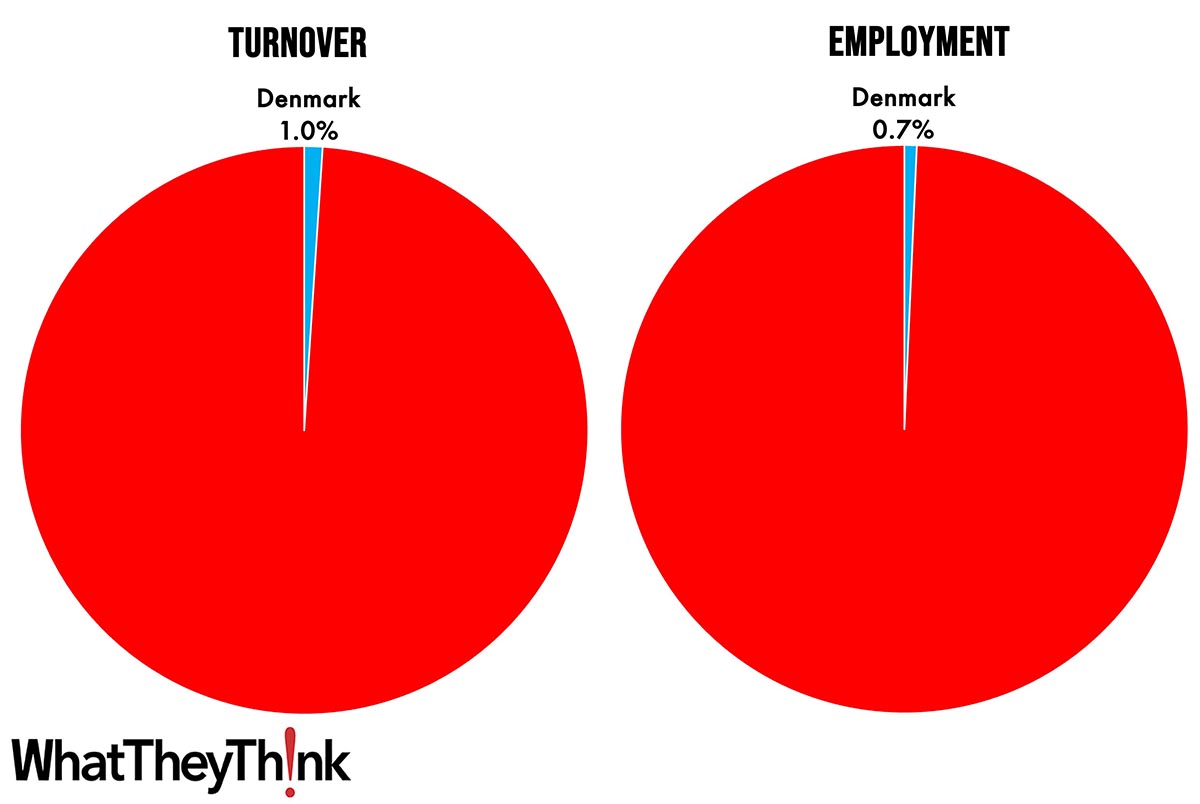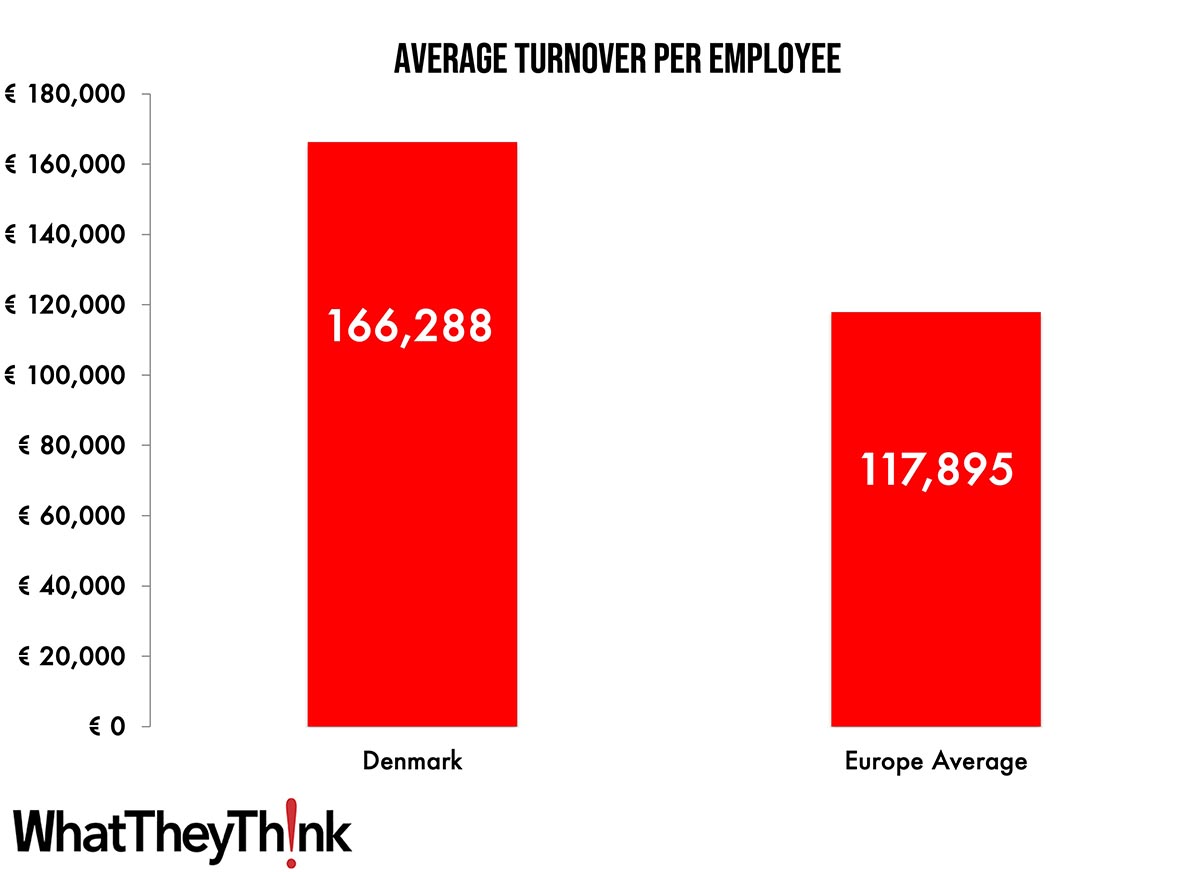The full results on turnover (revenues) in the printing industry in Europe for 2020 were published late in 2022—after index data was the only source for print volume developments during the pandemic. While the index data only allowed for estimating volume developments, now real turnover data is available, even if the data is far from perfect.
The turnover for commercial printing in Denmark has been in decline, with an average annual 2.8% growth since 2015. Since 2018 the decline even accelerated. Overall, the turnover stood at slightly above €810 million in 2019, after being close to €1 billion in 2015. In 2020, turnover dropped decisively by 10.3% to about €730 million due to the pandemic. The decline rate is below the European average of 15% although it follows after several years of decreases. The drop was close to the estimated decline based on volume index data for 2020. The latest production index data indicate that production volumes recovered only slightly in 2021 but have undergone another noticeable decline since the end of 2022.
The number of persons employed dropped faster than the turnover from 2015 to 2019, with an average rate of 6.1%. This points to strong automation activities and constant productivity improvements. In 2020 at the onset of the pandemic, a decline of 11% ensued, almost in line with the drop in turnover.

Source: Eurostat 2022 and digitalprintexpert.de
Overall, the printing industry in Denmark accounted for 1% of the total European printing industry in 2020, in the same range as Finland, Portugal, and Romania. In terms of the number of employees in print, the European share of Denmark is markedly lower at 0.7%, in the range of Ireland and Slovenia.
Denmark—Share of Turnover and Employment in Commercial Print in Europe, 2020

Source: Eurostat 2022 and digitalprintexpert.de
Based on Eurostat numbers for turnover and the number of employees in the printing industry, the average annual turnover per employee can be calculated. The €166,288 for 2019 is markedly higher than the European average and close to the values of the other Nordic Countries. The employment number does include part-time employees and owners with a salary. The year 2019 has been chosen as a basis for the comparison as 2020 could have been impacted by the COVID-19 pandemic and the differing speeds the labor markets reacted.

Source: Eurostat 2022 and digitalprintexpert.de
Please keep in mind that the data is based on Eurostat numbers for printing and related services (complemented by some estimates), which consists mainly of commercial and publishing printing, including prepress and finishing companies. That means that packaging, data centre, direct mail print or quick print/copy shops are not included or only on a limited basis. In-house print/CRD are not included at all. Europe as used in the series of articles includes the EU countries plus Norway, Switzerland, and the UK. If you have questions about sizing the European printing industry or need clarification, please contact me at [email protected].
This series on the turnover and employment development in commercial print in Europe will be continued. Next time we will have a look at the printing industry in Norway.














